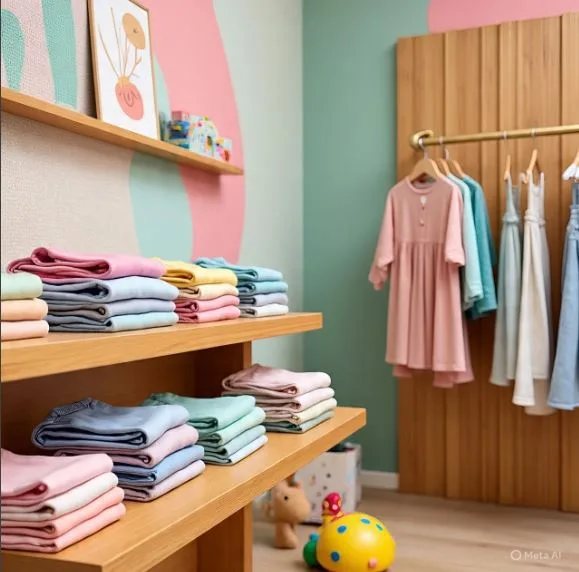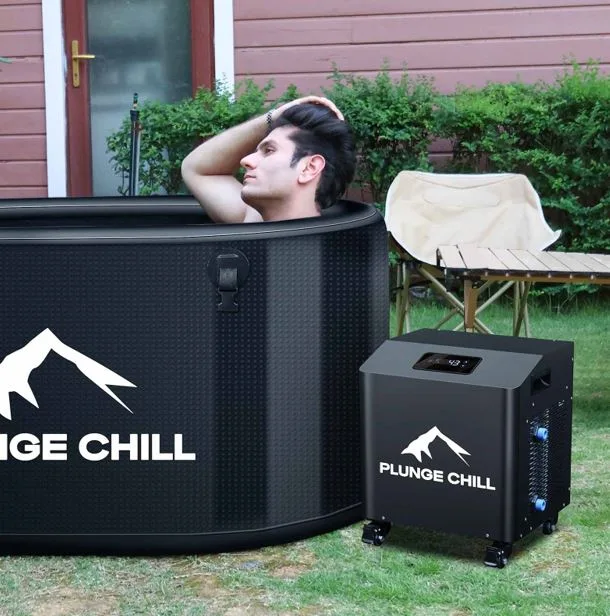Soft, Strong, and Sustainable: Why Bamboo is the Perfect Fabric for Kids’ Clothes
Parents juggle a lot—comfort, durability, budget, and the ever-present hope that the things we buy are kinder to the planet our kids will inherit. Enter bamboo fabric: a modern staple that’s winning over nurseries and school drop-offs alike. It’s famously soft, surprisingly strong, and—when made responsibly—an option you can feel good about choosing. If you’ve been curious about bamboo kids’ clothes, here’s a clear, parent-friendly guide to what makes them special, what to watch for, and how to get the best life from every piece.
What bamboo fabric actually is (and why that matters)
“Bamboo fabric” isn’t woven straight from stalks; it’s made by breaking bamboo down into pulp and spinning it into yarn. Most bamboo garments today are bamboo viscose (rayon), which delivers that signature silky softness and drape. There’s also bamboo lyocell, produced with a closed-loop process that captures and reuses solvents—typically considered the more eco-advanced option. You’ll sometimes see blends like bamboo viscose with a bit of spandex for stretch; that’s common in kids’ leggings, sleepers, and tees.
Why does this matter? Because labels tell you both what the fabric will feel like and how it was made. If sustainability is a priority, look for wording like “lyocell,” “closed-loop,” or certifications (more on those below). If pure comfort is your focus, viscose delivers an ultra-soft hand kids love.
Cloud-level comfort kids will actually wear
The biggest reason families try bamboo once and rarely look back is comfort. The fibers create a smooth, round yarn that feels soft right out of the package—no roughness, no stiff break-in period. That’s a lifesaver for picky dressers or little ones with sensitive skin who refuse anything “scratchy.”
Beyond softness, bamboo shines in day-to-day comfort:
- Breathable and moisture-managing. The knit structure of many bamboo garments allows air to circulate and helps move sweat off the skin. That means fewer “I’m sweaty!” complaints on the playground.
- Naturally thermoregulating. Parents often notice bamboo sleepers feel cozy in cooler rooms yet not stifling when the heat kicks up. It’s a helpful all-season base layer.
- Lightweight stretch. Many bamboo knits have a gentle stretch that moves with crawling, climbing, and cartwheeling—without the stiff, swishy feel some synthetics have.
In short: bamboo kids’ clothes tend to be the ones kids reach for first and fuss with least.
Built for real life: durability and practicality
Soft is great—soft that lasts is better. Despite its silky feel, bamboo (especially in a mid-weight knit) holds up well to kid life. Here’s what to expect:
- Resilient fibers. Quality bamboo knits bounce back after washing and resist bagging at the knees and elbows.
- Color retention. Bamboo takes dye beautifully, which helps keep graphics and solids vibrant after many laundry cycles.
- Less stink. Parents often report bamboo tees and pajamas don’t hold odors like some synthetics do, so they stay in rotation longer.
To maximize durability, check the fabric weight (often listed in GSM). A 200–230 GSM bamboo knit is a sweet spot for many kids’ staples—substantial without being heavy.
Kinder to sensitive skin
While no fabric can promise a medical outcome, bamboo’s smooth, round fibers are gentle on delicate or reactive skin. The lack of scratchy fibers and the fabric’s breathability help minimize friction and keep kids comfortable during long school days or overnight. If you’re shopping for a child prone to irritation, avoid heavy chemical finishes and look for OEKO-TEX® STANDARD 100 certification, which screens for harmful substances in textiles.
The sustainability story—what’s real and what to ask
Bamboo, the plant, grows quickly and regenerates without replanting. It can thrive with fewer pesticides and less water than many conventional crops. That’s a promising start. The nuance comes in how bamboo is turned into fabric:
- Viscose process: Common and responsible for that buttery feel, but it uses chemical solvents. Best-in-class producers recover and treat those solvents; lower-standard operations may not.
- Lyocell process: Uses a non-toxic solvent in a closed-loop system, recovering the vast majority for reuse. Often cited as the gold standard for regenerated cellulose fibers.
What should parents look for?
- Material transparency: Clear labeling such as “bamboo viscose/rayon” or “bamboo lyocell”.
- Certifications: OEKO-TEX® (for chemical safety), FSC® or PEFC (for responsibly managed forestry inputs—relevant when bamboo or other wood pulps are used), and brand sustainability reports describing closed-loop production.
- Packaging and dye practices: Recyclable packaging and low-impact or certified dyes are nice signals that a brand is thinking holistically.
When you pair responsible manufacturing with bamboo’s fast-growing feedstock, you get a fabric story that’s genuinely promising, not just trendy.
Bamboo vs. cotton vs. synthetics: how they stack up
Bamboo vs. cotton:
- Handfeel: Bamboo is typically silkier right away; high-quality cotton softens beautifully over time.
- Breathability: Both breathe; bamboo often feels cooler to the touch.
- Care: Both are easy to launder; bamboo prefers cooler washes to preserve its drape.
- Sustainability: Organic cotton has a strong environmental case; bamboo lyocell does too. Conventional options in either category can vary widely, so it pays to read labels.
Bamboo vs. synthetics (polyester, nylon):
- Comfort: Bamboo generally feels less plasticky and is quieter (no swish).
- Odor: Bamboo tends to retain fewer odors than some synthetics.
- Dry time: Synthetics can dry faster; bamboo is still quick compared to many natural fibers.
- Microplastics: Bamboo is a regenerated cellulose fiber and doesn’t shed microplastics the way pure synthetics can. Blends with spandex do introduce a small synthetic component.
For everyday tees, pajamas, leggings, and baby basics, bamboo kids’ clothes hit a sweet spot: premium feel, kid-proof performance, and a manufacturing path that can be meaningfully sustainable when done right.
What to look for when you shop
A few label cues make all the difference:
- Fiber content: Look for “bamboo viscose/rayon” or “bamboo lyocell.” If you want the most eco-advanced option, aim for lyocell or brands that disclose closed-loop production.
- Certifications:
- OEKO-TEX® STANDARD 100 for tested-safe textiles.
- FSC®/PEFC for responsibly sourced pulp.
- Fabric weight (GSM):
- 180–200 GSM: cool tees and layering pieces.
- 200–230 GSM: everyday leggings, joggers, pajamas.
- 250+ GSM: cozy sweats and hoodies.
- Construction details: Reinforced seams, covered tags, and quality waistbands prolong life (and reduce complaints).
- Fit and stretch: A 5–7% spandex blend adds recovery for active kids and helps pieces fit longer between growth spurts.
- Dyes and finishes: Prefer low-impact dyes and avoid heavy chemical finishes or strong fabric perfumes if your child is sensitive.
Care tips to keep bamboo at its best
The good news: bamboo is easy to care for. A few small habits protect that signature softness and shape.
- Wash cold, gentle cycle. Cool water preserves color and fiber strength.
- Skip fabric softeners. Bamboo doesn’t need them, and they can coat fibers.
- Use mild detergent. Less is more—especially for babies and sensitive skin.
- Air-dry or tumble low. High heat can weaken fibers over time; a low-heat tumble or a drying rack keeps garments in top form.
- Treat stains promptly. A gentle pre-treat on food or grass stains works wonders; avoid harsh bleaches.
- Wash with like fabrics. Laundering bamboo with similar soft knits reduces abrasion and pilling.
Follow those steps, and your bamboo kids’ clothes will look and feel great far beyond a single season.
Real-world wins parents notice
- All-day wearability: From circle time to soccer practice, kids stay comfy and dry.
- Fewer outfit battles: Softness and tag-free designs mean less resistance in the morning rush.
- Season-spanning versatility: The same bamboo leggings work under snow pants in January and with a tee in April.
- Hand-me-down friendly: Quality pieces survive the rough-and-tumble and still look good for sibling number two.
The bottom line
Kids need clothes that keep up—and parents deserve choices that feel good on every level. Bamboo offers a rare combination: buttery-soft comfort, kid-tested toughness, and a credible sustainability path when you choose transparent, certified brands. Whether you’re building a newborn layette, upgrading school basics, or searching for pajamas that finally end the “it’s itchy” chorus, bamboo is well worth a spot in the drawer.
If you’re new to the category, start with a pair of leggings or a pajama set and see how it fares in your family’s real life. Chances are those bamboo kids’ clothes will become the first-out-of-the-laundry favorites—the pieces you wish came in your size, too.







